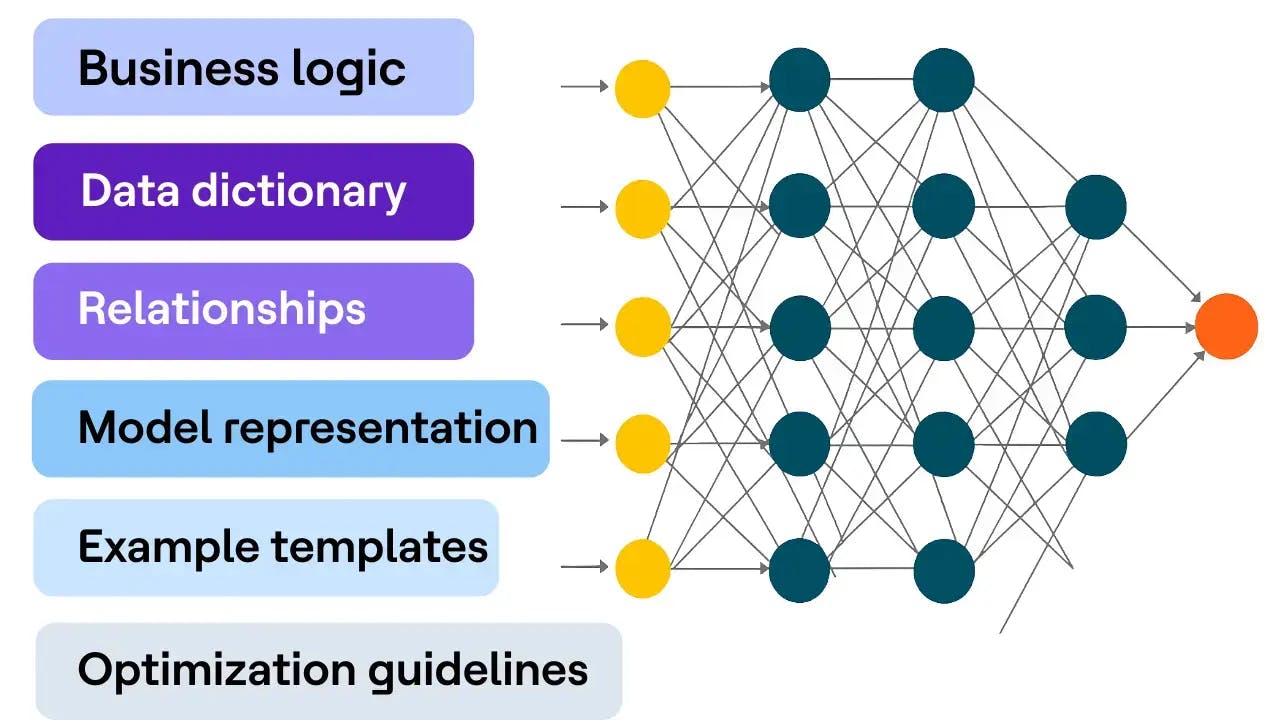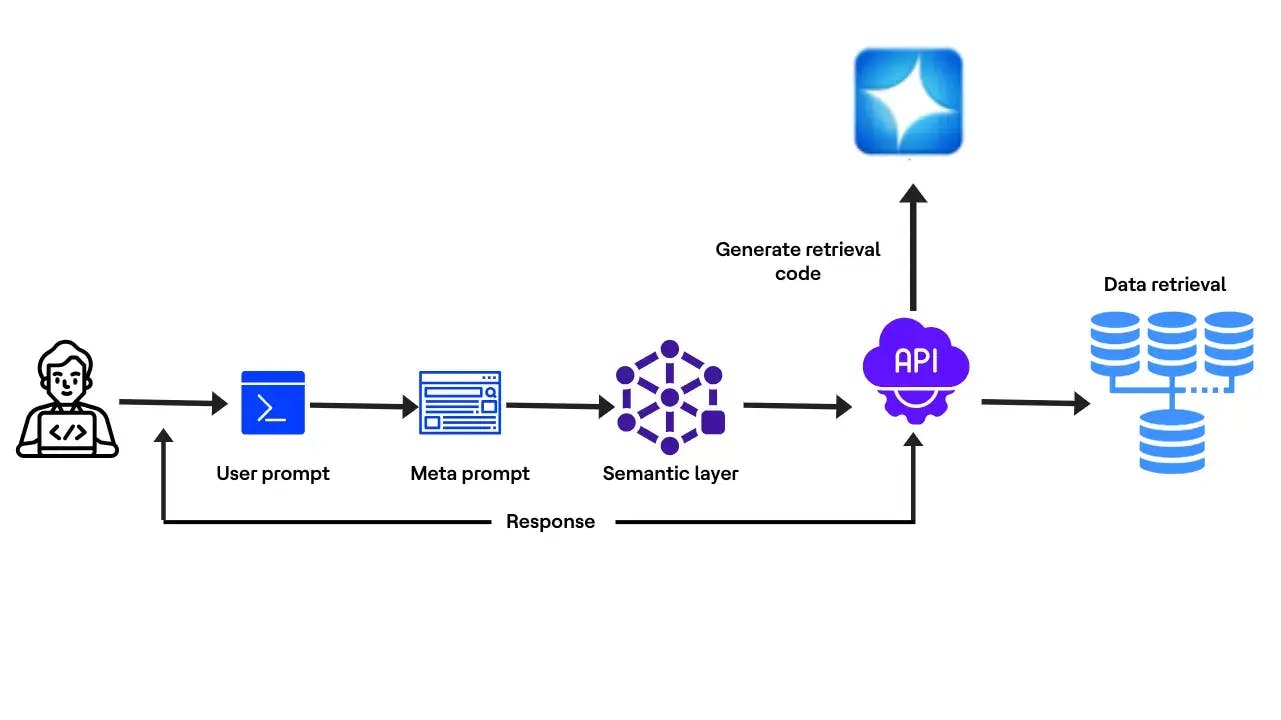Generative AI (GenAI) is transforming how humans engage with machines, elevating interactions from commands to conversations. By enabling natural language interfaces, GenAI has become more than a tool, it’s a collaborative partner that supports complex decision-making, automates workflows and delivers real-time insights. From customer support bots to supply chain copilots, GenAI is rapidly reshaping operations across industries. Yet, despite its promise, GenAI encounters a significant hurdle when interfacing with structured enterprise data. Unlike unstructured sources such as PDF documents or emails, structured databases are often embedded with cryptic table names, domain-specific acronyms and legacy schema conventions. Even the most advanced Large Language Models (LLMs) struggle. Not because they lack reasoning capability, but because of a persistent "lexicon gap" between how users naturally ask questions and how data is actually labeled. This gap poses one of the most critical barriers to GenAI adoption at scale.
At HCLTech, we’ve seen this challenge surface across diverse sectors, including finance, telecom, healthcare and manufacturing. Our experience has made one thing clear: to unlock accurate, enterprise-grade GenAI experiences, a robust semantic layer is essential. It bridges the divide between business language and data logic, enabling GenAI systems to become not just powerful but precise, reliable and production-ready.
The Challenge: Moving from insight to action - Why ‘good’ intent isn’t good enough
To unlock real business value from GenAI in structured data environments, the model must master two equally critical capabilities:
- Intent interpretation – Understanding what the user is asking in natural, human-friendly terms
- Lexical mapping – Translating that intent into the precise schema, syntax and codes used in enterprise databases
While GenAI models are adept at understanding context and semantics, structured data presents a unique challenge — one rooted less in logic and more in language. Most enterprise databases are not labeled in plain English. Instead, they’re filled with cryptic field names, regional codes and legacy schemas, shaped by years of business evolution. A user may ask, “What were our top 10 APAC customers by gross margin in Q2?”, but behind the scenes, the model must navigate labels like MARGIN_GROSS_PCT, REGION_CD_04 and DIM_CAL_DT_FISCAL_WK_NUM.
Traditional prompt engineering, embeddings and vector search, help the model grasp intent and retrieve relevant information, especially in unstructured contexts like emails, PDFs or transcripts. However, they fall short when GenAI is asked to generate SQL, filter data or trigger analytical workflows tied to structured systems. These models don’t inherently understand the internal vocabulary each enterprise has developed over time.
In practice, this lexicon gap results in:
- Malformed queries referencing the wrong or non-existent fields
- Silent inaccuracies where the model selects similar-sounding but incorrect attributes
- Reduced trust as business users spot inconsistencies and revert to manual processes
This is where the semantic layer proves essential, translating natural language into the precise language of enterprise data. It maps business concepts to backend structures, embeds domain logic and ensures GenAI queries align with stored data. This foundation turns GenAI prototypes into production-ready solutions, delivering consistent, trusted insights.
The Solution: A modern semantic layer built for GenAI
The most effective way to close the lexicon gap is a modern semantic layer — a business-friendly abstraction that sits between GenAI and your data estate. More than the “semantic layers” of traditional BI, this framework performs two indispensable roles for the GenAI era:
- Translation: It maps everyday questions to the exact tables, columns, codes and metrics buried in enterprise schemas, ensuring every query is syntactically correct and performance-optimized.
- Instruction: It supplies the LLM with rich context — metadata, relationships, rules and curated query examples — so the model learns your organization’s unique vocabulary and best-practice patterns.
By teaching AI to “speak enterprise,” the semantic layer converts natural language into secure, governed and efficient code, enabling trustworthy analytics, faster insights and scalable GenAI solutions.
Core components of an AI-Ready semantic layer
- Business logic: Codifies KPIs, calculations and guardrails so the model never “reinvents” the rule book.
- Data dictionary: Provides plain-English definitions for every table, column and code—eliminating guesswork and ambiguity.
- Relationships: Describes primary–foreign keys and data grain to ensure joins are both meaningful and performant.
- Model representation: Offers an abstracted view of the schema that hides vendor-specific quirks and highlights business entities.
- Example templates: Includes canonical query patterns in SQL, Python or Spark to guide the LLM in applying best practices.
- Optimization guidelines: Supplies hints on partitions, predicates and indexing to ensure generated code performs at production scale.

Well-designed semantic layers are declarative — often expressed in YAML or JSON — so they can be version-controlled, peer-reviewed and extended by both data engineers and domain SMEs.
How the pattern works in practice
- User asks: “Show Q2 gross margin for our top 10 APAC customers”
- LLM parses intent and identifies entities gross margin, Q2, APAC, top 10
- Semantic layer resolves lexicon maps gross margin to MARGIN_GROSS_PCT and APAC to region code 04
- Code template + optimisation hints guide the model to craft an efficient aggregation query
- Result returned in natural language or a dashboard. No data-engineering ticket raised, no manual SQL written

Real-world impact: Accuracy, efficiency and trust
HCLTech’s Data and AI Engineering team has implemented semantic-layer-enabled GenAI solutions across finance, telecom, life sciences and retail. The results speak volumes:
- Up to 90% reduction in wrong answers: Benchmarks show major accuracy gains over vector-only retrieval approaches
- Up to 60% faster response times: Guided query paths allow LLMs to “think” faster and reduce token usage
- Improved governance and traceability: Clear mappings from metric → field → source system support compliance and audit-readiness
- Faster insight-to-action: Business users can iterate in real time without logging engineering tickets
Implementation roadmap: From vision to value
- Prioritize critical domains (e.g., finance, operations, supply chain)
- Harvest metadata from catalogs, ER diagrams and existing BI models
- Run SME workshops to co-create data dictionaries and standardize terms
- Encode rules and templates in YAML or JSON with version control
- Integrate with LangChain/RAG frameworks for real-time GenAI interaction
- Log every generated query, feedback and performance for observability and refinement
- Scale horizontally by adding domains and vertically by supporting multi-modal data (e.g., text, images, time series)
At HCLTech, we accelerate this journey using platforms like AI Force for workflow automation and Agent2Agent (A2A) protocols to enable collaborative agent interactions.
The HCLTech advantage: A new operation model beyond tech
The semantic layer is more than a technical solution; it’s a strategic enabler for AI-driven decision-making. By translating business context into machine-ready logic, it democratizes access to insights, safeguards governance, reduces overhead and future-proofs GenAI investments.
At HCLTech, our cross-functional teams combine deep industry knowledge with proven frameworks like AI Force and A2A, to deliver cloud-agnostic, production-ready GenAI solutions built on robust semantic layers. Whether deploying a finance copilot or scaling conversational analytics, we help enterprises unlock accurate, trusted insights — because in business, every word and every column counts.


